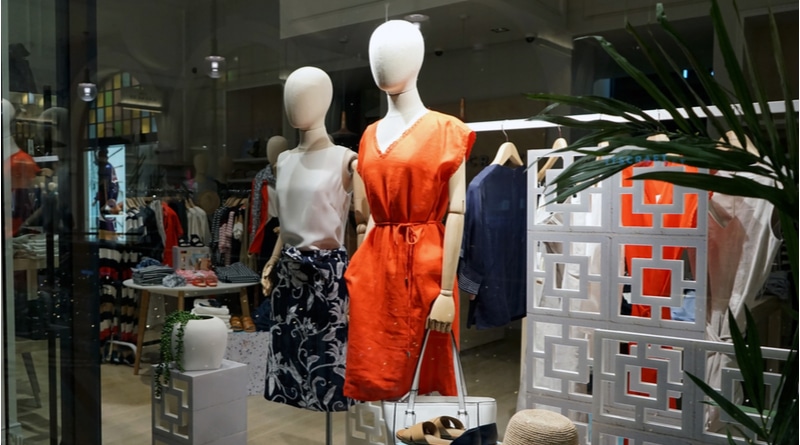What is Visual Merchandising?
Visual merchandising is a marketing practice that uses floor plans, colour, lighting, displays, technology and other elements to attract customer attention. Its ultimate purpose is to use the retail space to generate more sales.
A visual merchandiser combines marketing principles, retail merchandising knowledge, and creativity to use the space and layout of the store to present the store’s inventory in a positive way. They are professionally trained and may be tasked to manage everything from window installations to in-store displays and mannequin styling.
What 3rd level courses are available?
Universities and colleges in Ireland are offering courses in Visual Merchandising in the following subject areas:
- Certificate in Retail and Merchandising – Study the fundamentals of professional retail practice.
- Visual Retail Display – Learn how to create eye-catching visual Retail Displays that inspire the consumer to want more.
- Visual Culture: Research – A look into all aspects of art and design, representation, cultural production, cultural consumption, material culture, visual and spatial culture and cultural politics.
Studying Visual Merchandising in college
There are many courses in Visual Merchandising that take place over 1 year to 4 years, depending on the course and modules selected. There are part-time courses and night courses available as well so you can be sure to fit in your studies no matter what your schedule is like.
Courses will cover theory work through lectures, assignments, tutorials and taught modules. Assessments will take place on a continuous basis with written examinations and practical assignments combined in order to achieve a qualification.
You could also consider work experience or a work shadow in the industry. Gaining work experience in the retail sector can be helpful and especially if it involves creating displays and arranging products.
If you have no visual merchandising experience you may find it easier to step into this role by working as a retail sales assistant role first and getting involved in visual merchandising on the shop floor. By job shadowing and carrying out work experience assisting a professional in the field you’ll gain valuable insight, develop your portfolio, build a network of contacts and demonstrate your commitment to the profession. Observation is one of the best ways to learn skills and techniques.
Career options
After completing a Visual Merchandising course you will be able to get started in a career that uses specific knowledge of visual concepts and strategies and brand management.
As a visual merchandiser, you’ll promote retail brands, products and services in-store, in catalogues or online. You may also work with museums and galleries or create visual concepts for events. Keeping up with and predicting future trends will be an important part of your work.
As well as in-store or field visual merchandising teams, most major retailers will have visual merchandising teams based at their head office working on visual concepts for retail shops and/or catalogues and websites. Head office visual merchandising designers may visit stores out in the field to convey their design ideas to in-store visual merchandising teams and to ensure the concepts fit with the physical environment of the store.
Working hours will depend on whether you are employed by a company with set business hours or if you are contracted to various businesses or companies. Working hours are typically 35 to 40 hours across the whole week. Early morning starts or late night finishes are common, as work must generally take place before businesses open for trade. If conducting a complete store redesign, overtime or overnight work may be required.
Related jobs include:
- Visual merchandiser
- Retail merchandiser
- Retail buyer
- Retail manager
- Stylist
- Fashion designer
- Textile designer
- Clothing/textile technologist
- Event manager
- Jewellery designer
- Magazine journalist
- Make-up artist
Further study
After completing a course in Visual Merchandising you may choose to pursue further study in a specialist field to increase your knowledge base and skill set. Postgraduate study can also be used as a means to change career focus or to gain professional qualifications required to practice in certain career areas such as fashion buying and merchandising, fashion design, fine art or interior design.
FAQ
What skills could be helpful for a career in Visual Merchandising?
If you are considering a career in Visual Merchandising you will likely have a talent for design, colour and style, creative flair and imagination.
You should also have a strong interest in current and future design trends and visual/spatial awareness and manual dexterity.
General skills that are valued by employers in any field include effective communication and negotiation skills, the ability to work well with different teams and the capacity to work with constructive criticism.
What are the benefits of Visual Merchandising
- All types of retail stores can benefit from visual merchandising and there are many benefits.
- Reflects the brand – A good visual merchandising display stays in line with the company’s overall brand. For example, a franchise business might want all its franchisees to have the same promotional displays. It gives a business a sense of identity and brand consistency.
- Engages the shoppers – An attractive and welcoming store creates a positive first impression. It encourages people to come into the store and can help guide them in finding the right product for their needs. Visual merchandising helps create a positive shopping experience for customers so that they will be more likely to return for future visits.
- Grows sales – When done effectively, visual merchandising can increase sales by directing people to the products they want or need. It can also help them discover new products and solutions. A nicely dressed mannequin can encourage a person to seek out an outfit and accessories that they may not have originally been looking for.
Where can I study Visual Merchandising?
Explore your options here
Did You Know?
- A study discovered that a whopping 85% of customers found screens installed in grocery stores pleasant to watch. What’s more, customers generally had a positive reaction to digital signage and said that it caught their eye and they found the content useful.
- Studies have shown that 73% of customers want sales associates to provide additional information about products. What’s the reason? People want expert advice on what to buy, so they look to sales associates for product expertise.
- A store window display has to be attractive because it represents the very first information link to the possible client. A good window display can successfully replace advertising at any time.
- Different colours can change people’s impression of a store. Colour can affect people’s feelings and different scientific studies tell us that almost every colour has a specific emotional response.
- Lighting is also very important in visual merchandising. It is usually used in window displays and also in display cases to attract people’s attention to a specific item or product. The brightest areas or items will always steal customer’s attention.












Dear sir I want to admission on textile engineering
Have a nice day